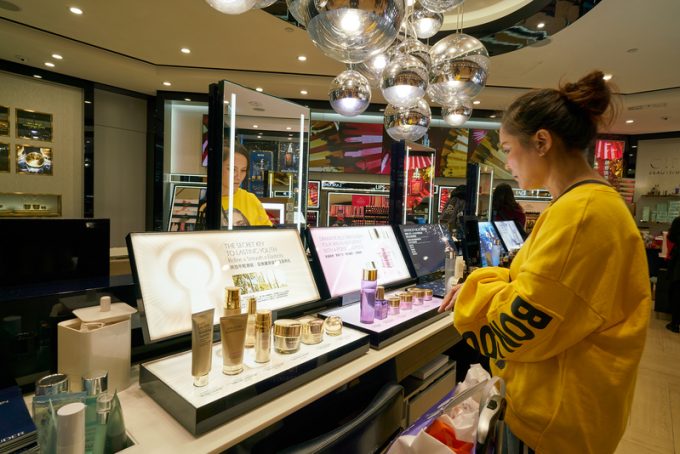UPS drama – a Premium back and forth on key bits and pieces
Network power
TFII: SOLID AS USUALMAERSK: WEAKENINGF: FALLING OFF A CLIFFAAPL: 'BOTTLENECK IN MAINLAND CHINA'AAPL: CHINA TRENDSDHL: GROWTH CAPEXR: ANOTHER SOLID DELIVERYMFT: HERE COMES THE FALLDSV: LOOK AT SCHENKER PERFORMANCEUPS: A WAVE OF DOWNGRADES DSV: BARGAIN BINKNX: EARNINGS OUTODFL: RISING AND FALLING AND THEN RISING
TFII: SOLID AS USUALMAERSK: WEAKENINGF: FALLING OFF A CLIFFAAPL: 'BOTTLENECK IN MAINLAND CHINA'AAPL: CHINA TRENDSDHL: GROWTH CAPEXR: ANOTHER SOLID DELIVERYMFT: HERE COMES THE FALLDSV: LOOK AT SCHENKER PERFORMANCEUPS: A WAVE OF DOWNGRADES DSV: BARGAIN BINKNX: EARNINGS OUTODFL: RISING AND FALLING AND THEN RISING

Although capacity headaches have largely dissipated and cost pressures eased, US retailers are still facing a challenging peak season.
Thanks to volatility and the need to juggle multiple channels and sustainability, the busiest time of the year for retailers does not hold much promise.
Many expect lacklustre consumer behaviour, owing to the financial constraints of inflation and signals of an economic downturn.
“We don’t expect much in retail,” said Oana Rusu-Williams, director of product marketing at supply chain software provider E2Open, adding that there will be variation between segments.
Although finding capacity is no longer a challenge, supply chain disruption remains a problem, confirmed Rogerio Pezutto, VP integrated business planning, North America at Estée Lauder.
US retailers are having a hard time forecasting sales, faced with high uncertainty about consumer spend in the coming weeks. This uncertainty and a volatile business climate, extending well into 2023, plus ongoing kinks in supply chains, dictate a highly flexible approach.
Contingency planning and having multiple options are extremely important, explained John Haber, chief strategy officer of Transportation Insight.
Retailers have to leverage all the channels at their disposal, for sales as well as moving product.
“You need to look at all channels. Every store could be a warehouse. Think of vessels, containers, everything can be a warehouse from which orders can be fulfilled,” Ms Rusu-Williams said.
“More and more companies go toward omni-channel,” added Mr Pezutto, but said the industry still had “ways to go to get there”.
To begin with, companies need full visibility, with data flowing as close to real-time as possible, he explained. These insights are necessary to rebalance inventory and to react to challenges on the supply side, which in turn requires technology.
“You need visibility, and technology to execute on that visibility,” he said.
And Mr Haber views visibility as a major stumbling block for many firms.
“A lot of companies are not where they need to be in terms of visibility and data flow,” he said. “It is challenging to react if you don’t have that critical visibility.”
He pointed to UPS CEO Carol Tomé, who said on the integrator’s earnings call last month that her company must be “very nimble” and “able to turn on a dime”.
Mr Haber expects stores to play a significantly elevated role in product flows. First and foremost, many have aggressively promoted the concept of purchasing goods online and then picking them up at a store, which creates a win-win situation for merchants and fulfilment providers.
The latter achieve greater traffic density by moving goods to stores instead of individual residential addresses, while merchants save on fulfilment costs. Moreover, nearly 50% of consumers buy further items when they visit stores to collect their purchases, he noted.
Stores are also figuring more prominently in merchandise returns. Amazon has struck a deal with Coles bookstore chain for shoppers to return online purchases, noted Gary Barraco, assistant VP product marketing at E2Open.
The cost of free returns is not sustainable, so more and more retailers are introducing restocking fees, added Mr Haber “Free returns on everything are about to end.”
And Mr Barraco added: “You also need to consider the sustainable side of returns. If consumers take their returns to a store, the flow is consolidated from the store.”
Shippers have a lot on their hands at this time, but they cannot ignore the sustainability aspect, said Mr Haber.
“Sustainability is very important. You’ve got to have a plan and strategy, and be able to execute and measure. It’s a huge issue for our customers.”
Comment on this article